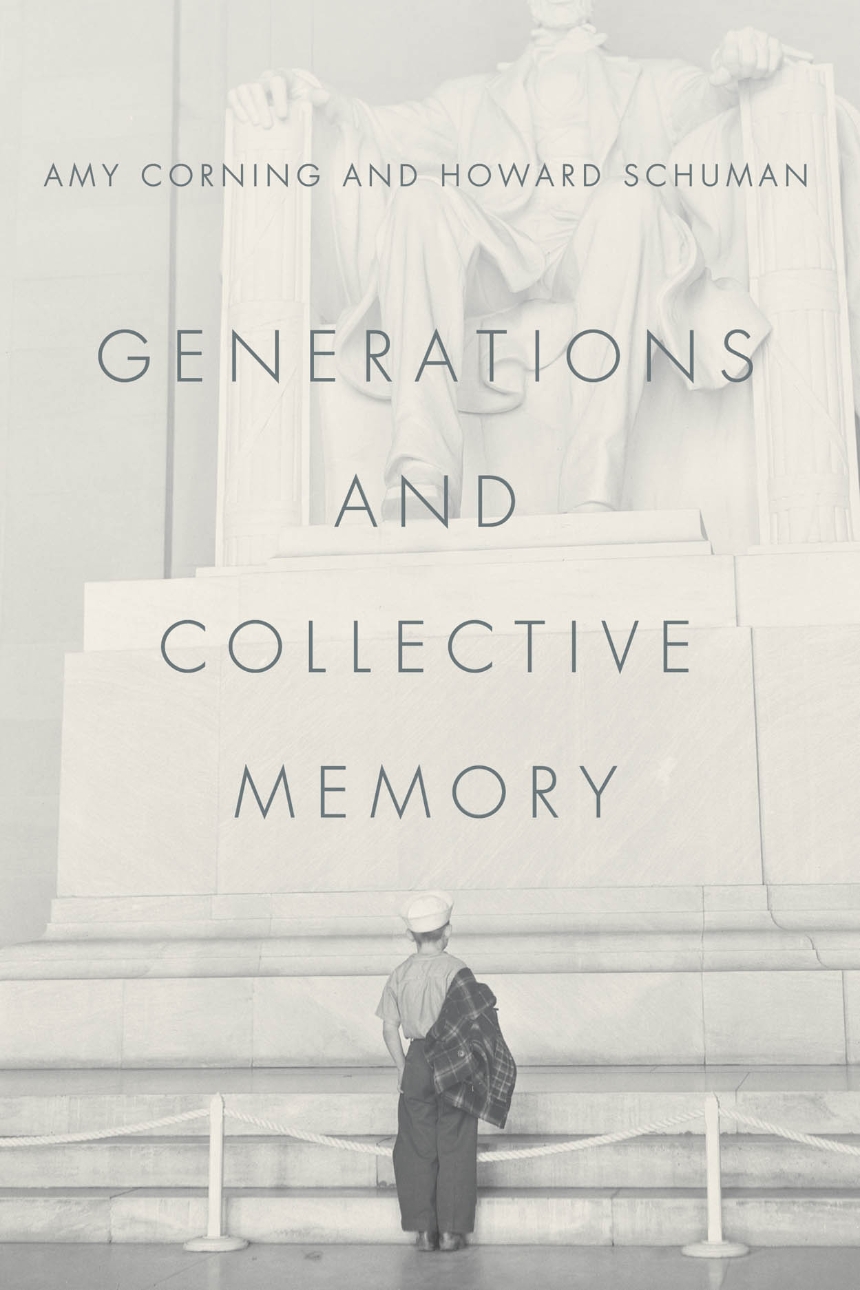Generations and Collective Memory
When discussing large social trends or experiences, we tend to group people into generations. But what does it mean to be part of a generation, and what gives that group meaning and coherence? It's collective memory, say Amy Corning and Howard Schuman, and in Generations and Collective Memory, they draw on an impressive range of research to show how generations share memories of formative experiences, and how understanding the way those memories form and change can help us understand society and history.
Their key finding—built on historical research and interviews in the United States and seven other countries (including China, Japan, Germany, Lithuania, Russia, Israel, and Ukraine)—is that our most powerful generational memories are of shared experiences in adolescence and early adulthood, like the 1963 Kennedy assassination for those born in the 1950s or the fall of the Berlin Wall for young people in 1989. But there are exceptions to that rule, and they're significant: Corning and Schuman find that epochal events in a country, like revolutions, override the expected effects of age, affecting citizens of all ages with a similar power and lasting intensity.
The picture Corning and Schuman paint of collective memory and its formation is fascinating on its face, but it also offers intriguing new ways to think about the rise and fall of historical reputations and attitudes toward political issues.
Their key finding—built on historical research and interviews in the United States and seven other countries (including China, Japan, Germany, Lithuania, Russia, Israel, and Ukraine)—is that our most powerful generational memories are of shared experiences in adolescence and early adulthood, like the 1963 Kennedy assassination for those born in the 1950s or the fall of the Berlin Wall for young people in 1989. But there are exceptions to that rule, and they're significant: Corning and Schuman find that epochal events in a country, like revolutions, override the expected effects of age, affecting citizens of all ages with a similar power and lasting intensity.
The picture Corning and Schuman paint of collective memory and its formation is fascinating on its face, but it also offers intriguing new ways to think about the rise and fall of historical reputations and attitudes toward political issues.
272 pages | 3 halftones, 34 line drawings, 15 tables | 6 x 9 | © 2015
Culture Studies:
History: General History
Political Science: Political Behavior and Public Opinion
Sociology: Collective Behavior, Mass Communication, Social History
Reviews
Table of Contents
Preface
Authors’ Note
Acknowledgments
Introduction: The Meanings of Collective Memory and Generation
Part One. Revising Collective Memories
1. Collective Memories and Counter-Memories of Christopher Columbus
2. Sally Hemings and Thomas Jefferson: Sex, Slavery, and Science
3. Abraham Lincoln: “Honest Abe” versus “the Great Emancipator”
Part Two. The Critical Years and Other Sources of Collective Memory
4. The Critical Years Hypothesis: The Idea and the Evidence
5. Cross-National Replications and Extensions
Part Three. Beyond Critical Years Effects
6. Does Emigration Affect Collective Memory?
7. Generational Experience of War and the Development of New Attitudes
8. Autobiographical Memory versus Collective Memory
9. Collective Knowledge: Findings and Losings
10. Commemoration Matters: The Past in the Present
Closing Reflections
Appendix A: Statistical Testing and Its Limitations
Appendix B: Survey Response Rates
Appendix C: Formal Tests of Critical Years Effects
Appendix D: Robustness of Standard Events Question
References
Index
Authors’ Note
Acknowledgments
Introduction: The Meanings of Collective Memory and Generation
Part One. Revising Collective Memories
1. Collective Memories and Counter-Memories of Christopher Columbus
2. Sally Hemings and Thomas Jefferson: Sex, Slavery, and Science
3. Abraham Lincoln: “Honest Abe” versus “the Great Emancipator”
Part Two. The Critical Years and Other Sources of Collective Memory
4. The Critical Years Hypothesis: The Idea and the Evidence
5. Cross-National Replications and Extensions
Part Three. Beyond Critical Years Effects
6. Does Emigration Affect Collective Memory?
7. Generational Experience of War and the Development of New Attitudes
8. Autobiographical Memory versus Collective Memory
9. Collective Knowledge: Findings and Losings
10. Commemoration Matters: The Past in the Present
Closing Reflections
Appendix A: Statistical Testing and Its Limitations
Appendix B: Survey Response Rates
Appendix C: Formal Tests of Critical Years Effects
Appendix D: Robustness of Standard Events Question
References
Index
